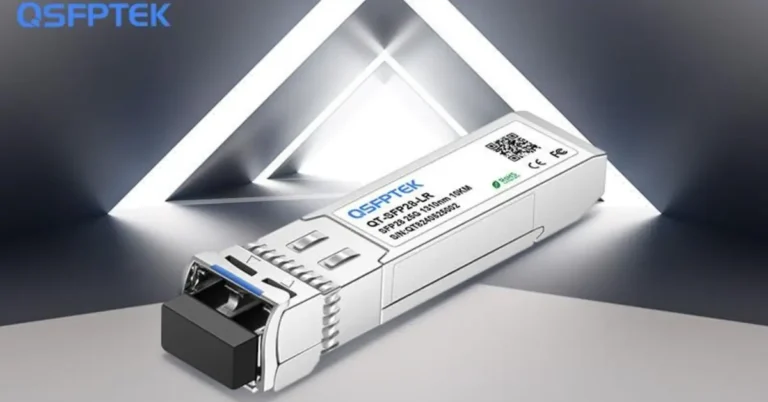As the world increasingly relies on real-time applications, such as autonomous vehicles, IoT devices, and smart cities, the importance of edge computing has grown dramatically. In this environment, 25G modules have become essential to ensure that networks can handle the high-speed data processing required for edge computing infrastructures. These optical modules provide a robust, cost-effective, and scalable solution for improving network performance and reducing latency, making them a crucial component for modern edge computing deployments.
Meeting the Demands of Edge Computing
Edge computing shifts data processing closer to where the data is generated, reducing the load on central data centers and minimizing latency. However, this requires high-performance networks to handle the data-intensive tasks on the edge. This is where 25G optical modules come into play.
25G modules offer the necessary bandwidth to handle the growing number of connected devices and the massive amounts of data they generate. Unlike their 10G counterparts, 25G modules provide higher throughput and more efficient use of fiber infrastructure, which is crucial for edge environments. They allow for faster data transfer rates, which is critical when latency-sensitive applications, such as IoT and real-time analytics, depend on split-second data processing.
Enhancing Network Performance
25G modules significantly enhance the performance of edge networks by offering a higher data transmission rate over single lanes compared to traditional 10G technologies. This increased bandwidth is essential for applications such as video streaming, AI-driven analytics, and industrial IoT, which rely on fast and reliable data transfers.
Furthermore, 25G optical modules help scale up network performance without requiring extensive hardware upgrades. As edge computing networks need to handle higher data loads without excessive investment in infrastructure, 25G modules offer a balance of performance and cost-effectiveness. Their ability to provide increased data capacity on existing infrastructure ensures that edge networks can keep pace with evolving data demands without breaking the bank.
Reducing Latency
One of the primary goals of edge computing is to reduce latency by processing data closer to its source. 25G modules facilitate this by delivering faster data transmission rates and more efficient data processing. When combined with edge computing architectures, the use of 25G modules can greatly reduce the time it takes for data to travel between devices and the network core.
For applications like autonomous vehicles, virtual reality, and smart manufacturing, where even milliseconds matter, the low latency enabled by 25G modules is vital. These modules provide the rapid data exchange needed for real-time decision-making processes, enabling edge computing systems to operate smoothly and efficiently.
Scalability and Future-Proofing
25G modules also offer scalability, which is critical for the growth of edge computing networks. As data volumes and the number of connected devices increase, edge networks need to be able to scale without massive overhauls. 25G technology provides an efficient upgrade path, as it allows network operators to increase capacity without overcomplicating network designs.
Moreover, the flexibility of 25G transceivers means they are compatible with next-generation technologies, such as 50G and 100G, which can further expand network capabilities. This future-proofing makes 25G modules an ideal investment for organizations looking to stay ahead in the ever-evolving networking landscape.
Energy Efficiency
In addition to performance and scalability, 25G modules are more energy-efficient than older technologies like 10G. This is particularly important for edge computing environments, where power consumption can quickly become a bottleneck, especially in remote or resource-constrained locations.
25G modules reduce the power required per gigabit of data transferred, helping to lower the overall energy footprint of edge networks. As organizations increasingly prioritize sustainability and energy efficiency, this characteristic makes 25G modules an attractive option for edge deployments.
Conclusion
In the fast-evolving world of edge computing, where real-time processing, low latency, and high bandwidth are essential, 25G modules stand out as a crucial enabler. Their ability to enhance network performance, reduce latency, and scale efficiently makes them an ideal solution for modern edge computing infrastructures. Additionally, their energy efficiency and future-proof capabilities ensure that organizations can continue to leverage 25G modules as the demands of edge computing grow. For businesses looking to optimize their networks for edge computing, investing in 25G optical modules is a clear step forward.

